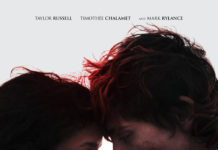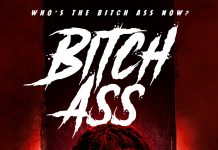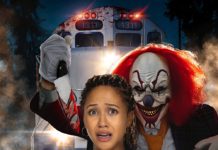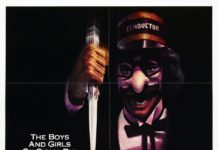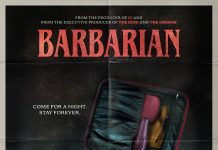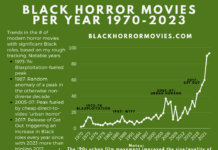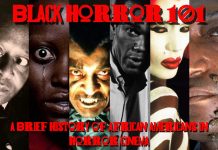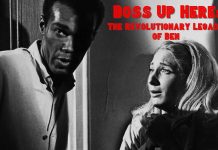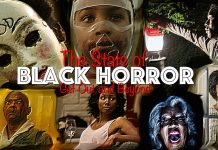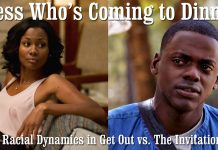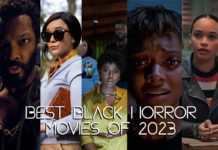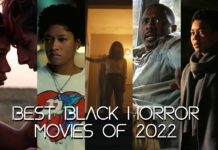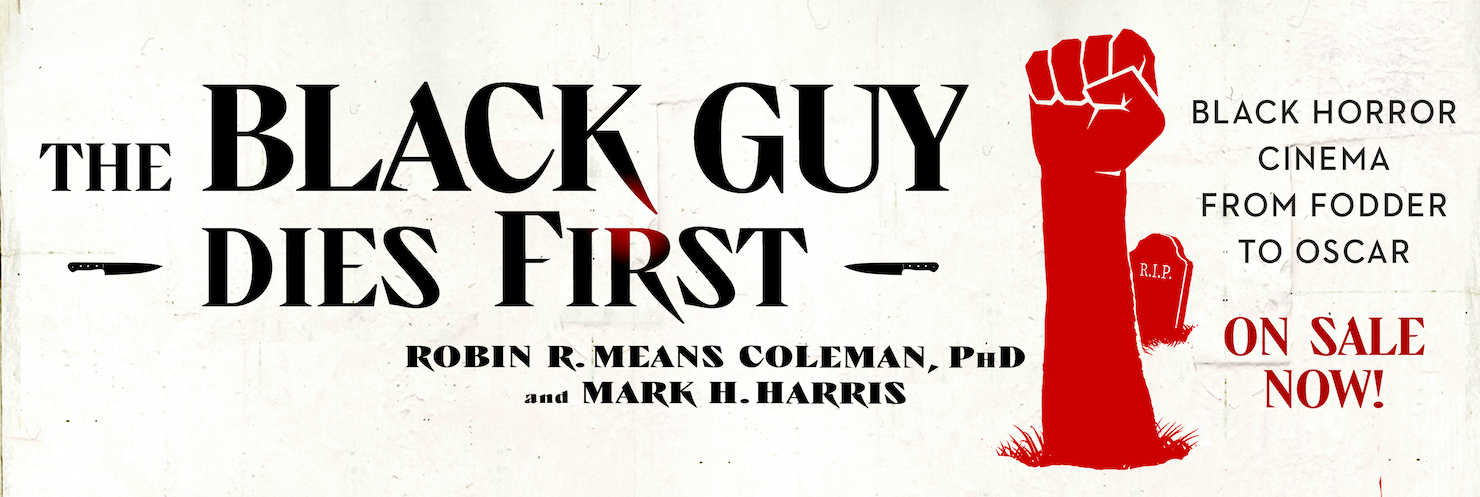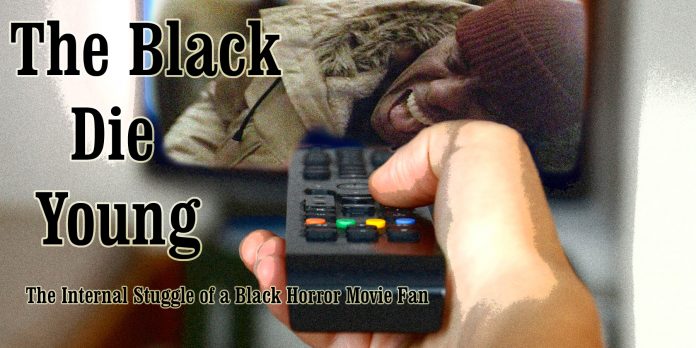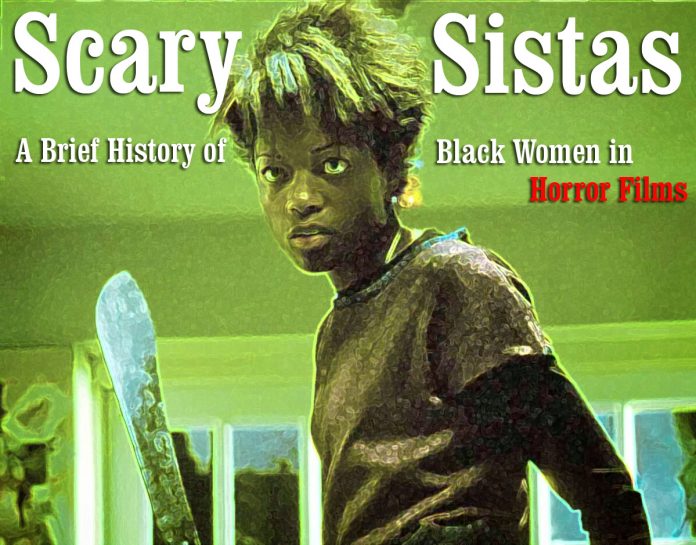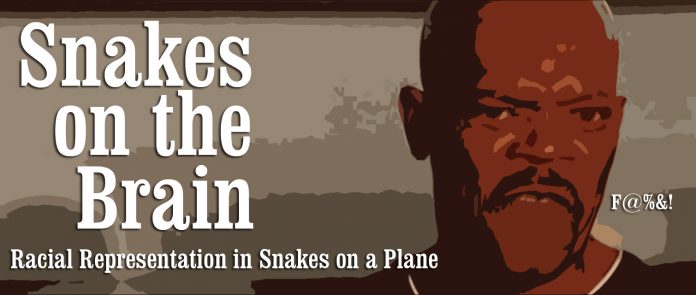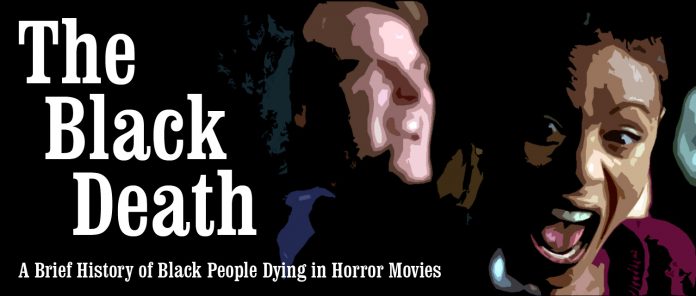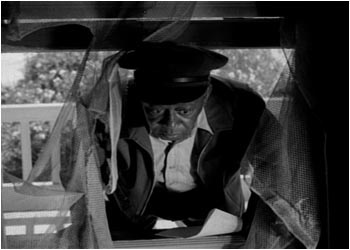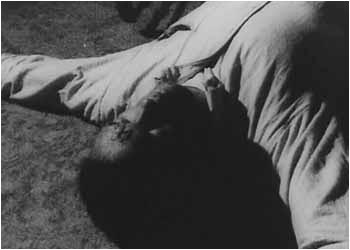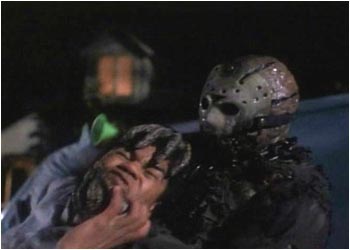Originally published on PopMatters.com
I have a secret passion; the less addicted of you might call it an addiction. I like to watch. I rent base, filthy movies and slip them into brown paper bags so no one can tell. I sit alone in seedy, near-empty theaters, pleasuring myself with this trash. I’m too embarrassed to tell anyone about my weakness, although my wife has caught me watching a time or two (“It’s a documentary!” is my standard excuse; she’s since cancelled the Discovery Channel.). But now I’m ready to step out of the shadows and proclaim loudly, I am a black man… and I love horror movies.
My guilt is overbearing, given the well-worn truism that “black person + horror movie = dead black person“. This is such an ingrained Hollywood reality that it’s even been parodied in films like Scary Movie and, um, Scary Movie 2 and 3.
Still, whenever I see that a black person is in a horror movie, I have to watch. While most viewers wonder if Neve Campbell will escape the clutches of the psycho killer, I stay tuned to see if she’ll run into Jamal hanging from a meat hook or if Black Thug #3 will find himself on the business end of a mutant shrew claw.
I’ve even begun to root for the worst.
I’m secretly disappointed when black actors don’t die in horror movies… especially that cocksure LL Cool J. (Rappers seem to have an irritating immunity — Ice Cube in Anaconda, Rah Digga in 13 Ghosts, Busta Rhymes in Halloween: Resurrection — probably due to their acute ability to “not go out like that.”) While everyone in the theater is yelling, “Don’t go in there, fool!”, I’m screaming, “Hey, Black Thug #3, I saw a St. Ides roll down that giant shrew hole!”
A while back, a black actor friend mentioned that he has a role in an upcoming slasher movie. “Do you die?” I blurted out, perhaps a bit too eager at the prospect.
He eyed me as if I were plotting his real-life death. “Um, no… I’m actually not in it for very long–“
“Not even off-screen? Like, from natural causes? Or a bear trap?”
“Don’t make me punch you in the head,” he said. Actors can be a touchy lot.
So why would I be so drawn to a genre known for killing off my own? Maybe it validates my suspicion that white people want us dead. Maybe it affirms a sort of racial indignation, like when that SOB Frank didn’t hold the elevator for you at work (“I knew he was a racist!”) More likely it’s the sheer camp factor; black horror genocide has reached such proportions that there’s a goofy appeal to it all. Or maybe I just like watching black people die.
It didn’t take long for me to learn how to uncover the most carnage with the least amount of effort. I quickly discerned that there are four main types of horror movies that feature black actors:
- Voodoo/zombie movies: Those wacky Caribbeans, always raising the dead.
- “Wilds of Africa” giant monster movies: Those wacky Africans, always getting eaten by unchecked evolution.
- Slashers: The conspicuously misplaced homeboy amongst a gaggle of preppy frat types. “Hi, my name’s Fodder!”
- All-black horror: The ’70s blaxploitation fare that combined horror — Blacula, Blackenstein, Dr. Black and Mr. Hyde — with potentially horrific “honky revenge.”
Blaxploitation has since given way to so-called “urban horror,” the prospect of which initially sent my bloodlust into overdrive. But I soon discovered that the effect is nullified if there are no white survivors as contrast. It ends up just feeling like black-on-black crime. Or course, it doesn’t help that urban horror is a lot like urban porn: cheap, ugly and probably mildly syphilitic.
I can only guess that the target audience is either black horror fans like myself or, having seen most of these films, people who cut themselves. The DVD cover art usually costs more than the entire movie, drawing suckers like me into its grasp with bright colors and shiny baubles. And the titles are oh, so hiply misspelled — Vampiyaz, Zombiez, Cryptz — I’m still waiting for The Loch Nezz Monzter or The Abominable Znowman (Illiteracy is so cool!). On some level, when I watch these movies, I feel like I’m supporting “the cause,” although the cause seems to be scamming viewers with crappy movies.
If you wanna see black people die, watching any horror movie made before 1968 is basically a waste of time. Aside from the anonymous “booga booga”-chanting native who gets trampled by King Kong, you’ll find mostly butlers, maids and assorted ethnic interior decoration (“Would you like to have a seat? Hey, Sofa, come here!”) who aren’t important enough to get a name, much less a death scene. Those who were big enough to get billing were typically the Mantan Moreland type of jumpy, “I ain’t a-goin’ in dere” spooks, who have since evolved into today’s streetwise “Fuck that, I ain’t going in there” spooks (See Mike Epps in Resident Evil: Apocalypse. Or don’t. Really, you don’t have to.).
In order to be a connoisseur of black death, you have to train yourself to recognize the death potential of a cast just by looking at the credits. If you see any of the following people listed, chances are you’ll find them at some point walking around in the dark, shouting, “Guys? Guys? Quit screwing around!” or at best, a heroic “Get out of here! Save yourself!” But more than anything, they scream “disposable”:
- Charles S. Dutton
- Joe Morton
- Antonio “Huggy Bear” Fargas
- Ernie Hudson
- Giancarlo Esposito
- Miguel “Juwanna Mann” Nunez, Jr.
- CCH Pounder
- Leon
- Tom “Tiny” Lister, Jr.
- Morris Chestnut
- Omar Epps and/or Mekhi Phifer
- Nipsey Russell
On the flip side, the most likely to live (and thus the most advisable to avoid) include:
- Halle Berry
- anyone resembling Halle Berry (see Salli Richardson in Anacondas: The Hunt for the Blood Orchid)
Basically, if they’re big stars, they have a shot. But then again, if they’re big stars, chances are they aren’t in a horror movie.
Still, some of our greatest black actors have been “offed” in horror movies: James Earl Jones, Denzel Washington, Ossie Davis, Morgan Freeman, Doug E. Doug. But who speaks for these fallen heroes? I do. If not me, who? If not now, why? If not when, because. So far, I’ve tracked over 300 confirmed kills and 250 “Fuck that, I ain’t going in there”s. I’ve even registered a domain, www.blackhorrormovies.com, to share my findings and maybe post a pic or two.
Sure, there are readily accepted classics of the genre — from Frankenstein to The Exorcist to Scream — but take a moment and pay homage to the most thankless job in Hollywood: the black horror movie victim. Rent Dr. Giggles (Three kills!), I Still Know What You Did Last Summer (Four!), or Children of the Corn III: Urban Harvest (Five freshly husked corpses!). And every night, say a prayer to the patron saint of black death, Scatman Crothers, who took an axe for that crazy-ass white boy in The Shining so that others might follow in his footsteps.

